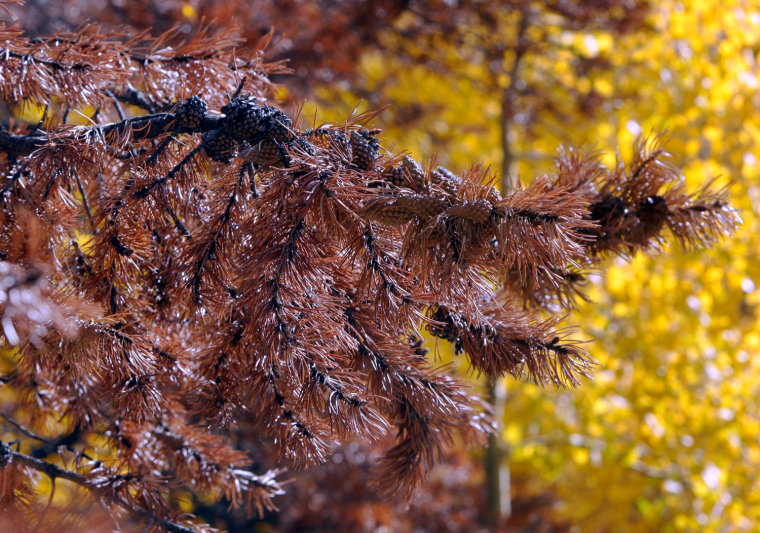Marauding insects have become a leading threat to the nation's forests over the past decade, a problem made worse by drought and a warming climate, a federal report says.
Bark beetles, engraver beetles and gypsy moths are the primary culprits behind a threefold increase in forestland mortality caused by insect attacks between 2003 and 2007, according to a U.S. Forest Service report obtained Wednesday by The Associated Press.
The volume of forests in the lower 48 states killed by bugs totaled 37 million acres during the period, up from 12 million during the previous five years. Millions of additional acres have perished since.
When defoliated trees are added to those killed outright, the acreage significantly damaged by insects since 2003 totals about 50 million — 8 percent of forest area in the lower 48 states, the report says. The victims range from Rocky Mountain pine forests hammered by bark beetles to ash stands in Northeastern and Upper Midwestern states, where authorities have struggled to contain an emerald ash borer invasion.
By comparison, about 13 million acres were scorched by fires during the same period, less than 2 percent of all forest acreage.
Other dangers include overdevelopment, pollution and storm damage. Still, the nation's 751 million acres of forestland have remained "remarkably stable" over the past half-century, says the federal agency's first comprehensive report card on their health in eight years.
"Forests are incredibly resilient, and from an ecological point of view this is how they regenerate," said Rob Mangold, the agency's director of forest health protection. "They go through this cycle of death to produce a new forest. You have to look at things in the long term, although locally there are some really big impacts."
Drought early in the reporting period weakened many Western trees, making them more vulnerable to beetle attack, said Richard Guldin of the Forest Service's research and development arm. Milder winters have boosted the beetles' survival rates and numbers.
"We get enormous numbers of beetles that overwhelm even healthy trees," Mangold said.
Aerial surveys indicate a drop-off in beetle depredation in some parts of the West over the past couple of years, he said. While it's too early to say whether that represents a trend, previous infestations have risen and fallen over time.
The Southern pine beetle killed nearly 28 million loblolly pines in the mid-1980s, but the total dropped to a few million two decades later as the number of host trees declined. Spruce budworm epidemics have broken out in 30- to 50-year cycles, as sections of forest died and regrew.
While little can be done to prevent periodic attacks by native insects, officials say people can help prevent the spread of foreign invaders such as the emerald ash borer and Asian longhorned beetle by refraining from moving firewood. The ash borer has killed tens of millions of trees in the Northeast and Upper Midwest.
"It's a terribly difficult insect and there's still a big effort to figure out the best way to contain it, but we know that firewood is the primary means of spreading that pest," said Mike Philip, pest survey program manager with the Michigan Department of Agriculture.
Fires increased in number and intensity during the period covered by the report. They burned nearly 40 million acres of all land types between 2003 and 2007, up from 25 million during the previous five years. Of the acreage burned from 2003-07, about 13 million were forests.
About 1.7 million acres died from drought and other weather-related events, up from 788,000 acres during the preceding five years.
Although overall acreage has changed little over the past 50 years, the nation's forests also are being weakened by fragmentation from urban and recreational development, which is increasing by about 1.6 percent annually, the report said. Many paper and wood products companies have sold large tracts previously managed for logging and conservation.
"Our nation's trees and forests are the very lifeblood for the clean air and water we all take for granted in this country," Forest Service chief Tom Tidwell said.
